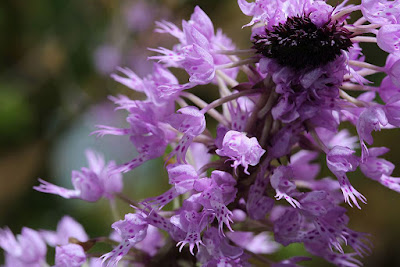Stenoglottis longifolia is native to South Africa. This terrestrial orchid meets in Natal, where it grows in humus or on mossy rocks and riverside cliffs, often on rock ledges, at altitudes up to 1300 meters...
Stenoglottis longifolia also called as The Long-Leafed Stenoglottis, is a species of the genus Stenoglottis. This species was described by Joseph Dalton Hooker in 1891.
IDENTIFY STENOGLOTTIS LONGIFOLIA
Stenoglottis longifolia is native to South Africa. This terrestrial orchid meets in Natal, where it grows in humus or on mossy rocks and riverside cliffs, often on rock ledges, at altitudes up to 1300 meters.
It is a medium to large sized, robust and stout, cool growing terrestrial, epiphyte or lithophyte with numerous oblanceolate or narrowly oblong, acute, light green, 9-25 cm long and 1.0-4.0 cm wide leaves that have undulate margins in a basal rosette.
The Long-Leafed Stenoglottis blooms in the fall on an erect, terminal, 35 cm long, racemose, many flowered inflorescence that has a few scattered sheaths along the scape, occurring in the summer and autumn. The flowers are 1 to 1.2 cm in diameter and form a dense, multiflorous bunch at the top of the flower shoot, and open successively, for quite a long period of time, starting from the base towards the tip of the shoot.
STENOGLOTTIS LONGIFOLIA CARE AND CULTURE
Cultural information should only be used as a guide, and should be to be adapted to suit you. Your physical location; where you grow your plants, how much time you have to devote to their care, and many other factors, will need to be taken into account. Only then can you decide on the cultural methods that best suit you and your plants.
Light:
Stenoglottis longifolia needs a light level of 20000-30000 lux. To bloom, this plants need a lot of bright light, but it should be filtered or dispersed, and the plants should be protected from the midday sun. Strong air movement should be ensured all the time.
Temperature:
It is a plant with moderate thermal requirements. In summer, the average day temperature is 25-26 ° C, night 18-19 ° C, with a daily amplitude of 7 ° C. The average winter temperature is 21 ° C at night, 9-11 ° C at night, with a daily amplitude of 10-11 ° C.
Humidity:
The Long-Leafed Stenoglottis needs the humidity of 70-75% for most of the year, only up to 65% for 2-3 winter months.
Substrate, growing media and repotting:
Stenoglottis longifolia grow best in rather shallow pots or containers with perfect drainage, filled with porous compost from osmunda cut fern, fibrous peat, granular sand and chopped sphagnum moss. These plants should be exposed as little as possible to violations, but since they do not tolerate excessively acidified soil around the roots, they must be replanted as soon as the substrate begins to decompose. If repotting is necessary, it is best to do it when the plant is in a dormant state.
Watering:
For most of the year, rainfall is moderate to moderate, but from the end of spring to the beginning of autumn, it is quite abundant. A slightly more dry period occurs in winter. The cultivated plants should often be watered during active growth, but excellent drainage should be ensured so that the substrate within the roots is not degraded or soggy.
Fertilizer:
The plants should be fertilized every week 1/4-1/2 of the recommended dose of fertilizer for orchids. A fertilizer with a high nitrogen content is beneficial from spring to mid-summer, and a fertilizer richer in phosphorus should be used in late summer and autumn.
Rest period:
The amount of water for Stenoglottis longifolia in the winter should be reduced and allow the plants to dry well between waterings, but they can not remain completely dry for a long time. Occasional fogging in the early morning, between rare watering, should protect the plants against excessive drying, and at the same time provide the necessary dry rest period. When the leaves turn yellow and wither, practically stop watering. However, care must be taken that the substrate never completely dried up, as the tubers may become too dehydrated. Watering resumes when new roots appear on the surface. Fertilization should be reduced or eliminated until new growths appear and a more abundant spring watering begins.















COMMENTS